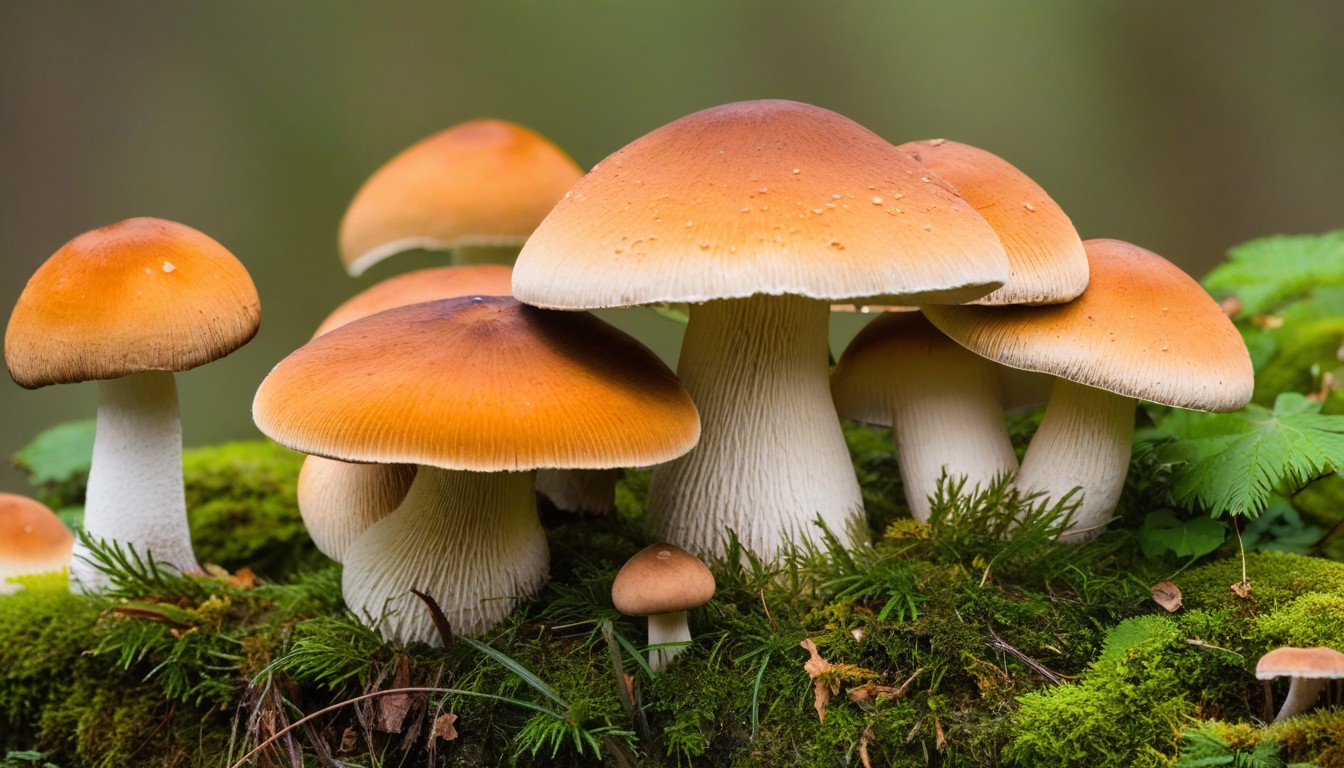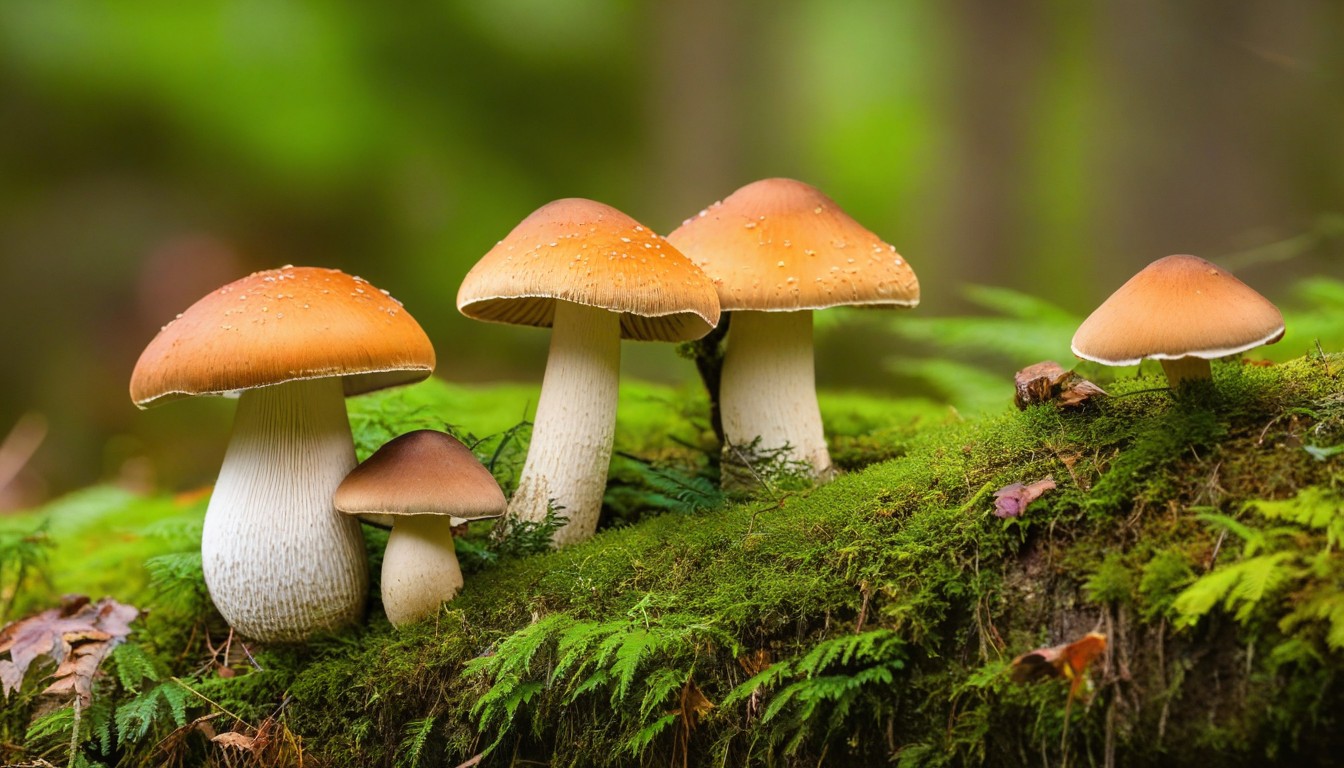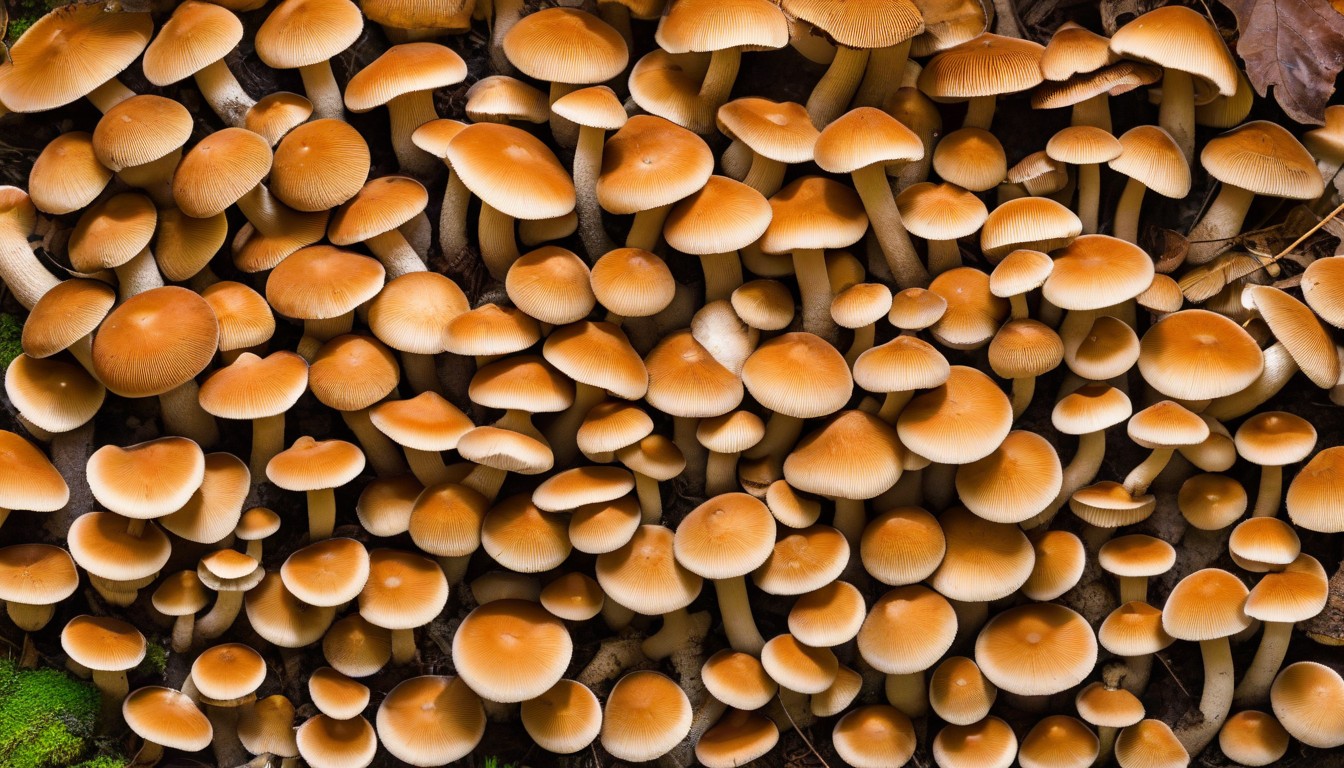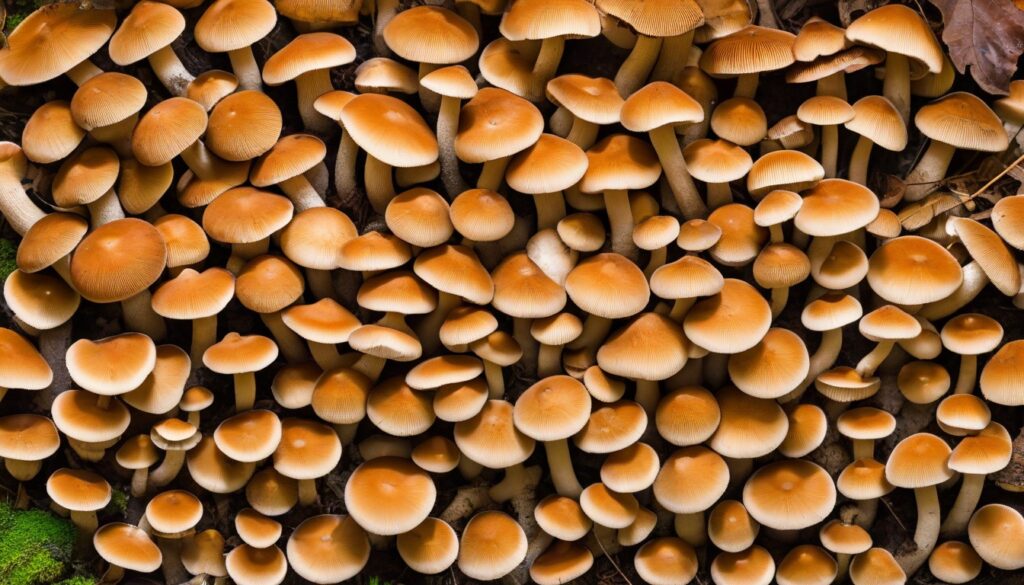Are you a fan of fresh, foraged mushrooms? Look no further than Maine! With its diverse ecosystems, Maine provides ample opportunities for mushroom foraging enthusiasts of all levels.
In this comprehensive guide, we will provide you with all the necessary information for a successful mushroom-foraging trip in Maine. From the best spots to find edible mushrooms to tips on identifying different varieties, we’ve got you covered.
Whether you’re a seasoned forager or a beginner, this guide will help you make the most of your foraging experience in Maine. So, let’s get started!
Key Takeaways:
- Maine is a great location for mushroom foraging enthusiasts of all levels.
- This guide will provide tips on where to find mushrooms and how to identify different varieties.
- It is important to forage ethically and safely to preserve the ecology and sustainability of mushroom populations.
- Cooking tips, recipes, and techniques for preserving mushrooms will also be provided.
- Remember to enjoy the experience and the delicious rewards of foraging.
The Fascinating World of Edible Mushrooms
When it comes to the world of culinary delights, few things inspire the imagination quite like edible mushrooms. Widely available and incredibly diverse, they have captured the attention of chefs and foodies across the globe. But what makes them so fascinating?
For one, edible mushrooms come in all shapes and sizes, with over 10,000 different varieties worldwide. From the familiar button mushroom to the exotic matsutake, each offers a unique flavor, texture, and nutritional value.
But edible mushrooms are much more than a tasty addition to any dish. They are rich in vitamins, minerals, and antioxidants, and have been used for medicinal purposes for centuries. Some mushrooms even have immune-boosting properties and anti-inflammatory effects, making them a popular choice for health enthusiasts.
Moreover, beyond their culinary and medicinal virtues, edible mushrooms also have cultural and ecological significance. They have played a role in human history, used for everything from religious ceremonies to dyeing textiles, and they play a crucial role in the ecosystem, helping to decompose organic matter and cycle nutrients.
With such fascinating characteristics, it’s no wonder that edible mushrooms continue to captivate people around the world. Now, let’s dive into the specifics of the edible mushroom varieties you can find in Maine.
Top Spots for Mushroom Foraging in Maine
Ready to forage for some mushrooms in Maine? You’re in luck! The Pine Tree State offers a variety of regions and habitats, each with its mushroom foraging bounty.
The North Woods
If you’re looking for a deep forest experience, head up north to the North Woods region. This vast area is home to a plethora of edible mushrooms, including chanterelles and lobster mushrooms.
|
Mushroom Variety |
Season |
|---|---|
|
Chanterelles |
June – October |
|
Lobster Mushrooms |
August – October |
The Midcoast Region
If you prefer coastal regions, check out the Midcoast area. With its unique ecosystem of hardwood forests and coastal wetlands, you’ll find a variety of tasty mushrooms, such as oyster mushrooms and hen of the woods.
|
Mushroom Variety |
Season |
|---|---|
|
Oyster Mushrooms |
May – October |
|
Hen of the Woods |
August – November |
Acadia National Park
For a truly unique foraging experience, head east to Acadia National Park. This stunning park offers a variety of mushroom species, from giant puffballs to black trumpet mushrooms.
|
Mushroom Variety |
Season |
|---|---|
|
Giant Puffballs |
July – September |
|
Black Trumpet Mushrooms |
August – October |
Remember, different mushrooms grow in different regions at different times of the year, so be sure to do your research before heading out to forage. And always practice ethical and sustainable foraging to ensure the longevity of this beautiful resource for future generations.
Popular Edible Mushroom Varieties in Maine

Main is a haven for mushroom enthusiasts with a diverse range of edible mushrooms found throughout the state. Here are some of the most popular varieties to look out for during your foraging adventures:
|
Mushroom Name |
Identification |
Taste Profile |
Culinary Uses |
|---|---|---|---|
|
Chanterelle |
Bright golden or yellow with a wavy-cap, false gills, and a distinctive fruity aroma. |
Earthy, fruity, and peppery. |
Best sautéed, baked, or used in cream sauces for pasta dishes. |
|
Lobster Mushroom |
Bright orange or red with a bumpy surface resembling a lobster shell. |
Mild and meaty, similar to seafood. |
Adds depth to soups, stews, and risottos. |
|
Morel |
Cone-shaped with a honeycomb texture and a distinct hollow cap. |
Nutty and earthy with an intense umami flavor. |
Best sautéed in butter or olive oil and paired with eggs, risottos, and cream sauces. |
|
Black Trumpet |
Dark brown, trumpet-shaped, and thin with a mild and woody aroma. |
Rich and earthy with a fruity or black currant flavor. |
Best sautéed or roasted with garlic and herbs, and used as a topping for soups, pizzas, and pastas. |
|
Hen of the Woods |
Grayish-brown with a frilly appearance resembling a feathered bird. |
Rich, nutty, and meaty with a buttery texture. |
Perfect for grilling or roasting and used to flavor stocks, soups, and stews. |
Note: Remember to pay attention to proper identification and take any necessary precautions.
What to Keep in Mind
Understanding the taste profile and culinary uses of various mushroom varieties can help enhance your foraging experience. However, it is crucial to be 100% certain in your identification as there are many poisonous look-alikes that can be fatal if consumed.
Be sure to cross-reference any mushroom found against a reputable guide or consult local experts before consuming anything found in the wild.
Seasonal Harvesting: When to Find Edible Mushrooms in Maine
Foraging for edible mushrooms requires an understanding of the seasonal availability of various mushroom varieties. Maine’s climate and geography contribute to a rich ecosystem that supports a diverse range of edible mushrooms throughout the year.
In spring, the first mushrooms to appear are the morels. These prized fungi can be found throughout the state, especially in wooded areas. As summer approaches, chanterelles and black trumpets begin to emerge. Both varieties are abundant in Maine’s deciduous forests, often in association with hardwood trees.
The fall is the peak season for mushroom foragers in Maine, with a wide variety of edible mushrooms available. Among the most plentiful are hen of the woods and chicken of the woods, both of which grow on or at the base of hardwood trees. Porcini and other boletes are also common in the fall, along with the iconic bright orange lobster mushroom.
Winter in Maine can be harsh, but foraging is still possible. The primary finds during this season are the oyster mushrooms, which grow on the trunks of hardwood trees and can tolerate cold temperatures.
Remember, mushroom foraging requires a keen eye and strict adherence to safety guidelines, especially when hunting for mushrooms in the wild. However, with the knowledge of seasonal availability and proper foraging techniques, you can have a rewarding and delicious foraging experience in the beautiful state of Maine.
Foraging Ethically and Sustainably in Maine

Foraging for edible mushrooms is not only a fun and rewarding activity but also an opportunity to connect with nature and the environment. However, it’s crucial to remember that sustainable foraging practices are essential for preserving the ecology and ensuring a future supply of mushrooms.
Here are some important foraging ethics and sustainable practices to follow while hunting for edible mushrooms in Maine:
- Only take what you need: Avoid over-harvesting and taking more than you can use. Leave some mushrooms behind to allow them to spread their spores and help the population grow.
- Respect the environment: Be mindful of the natural habitats and ecosystems where mushrooms grow. Avoid areas or regions that are ecologically sensitive or where mushroom populations are scarce.
- Know your mushrooms: Familiarize yourself with different mushroom species to avoid picking the wrong ones or damaging the environment.
- Use the right tools: Use appropriate tools, such as a sharp knife or scissors, to avoid damaging the mycelium or roots of the mushrooms.
- Be safe: Wear appropriate clothing, such as long pants and sleeves, and bring insect repellent and a first-aid kit.
- Give back: Consider giving back to the environment by participating in mushroom conservation efforts or contributing to ecological organizations.
Sustainable Foraging Tips
|
Foraging Ethics |
Sustainable Practices |
|---|---|
|
Take only what you need |
Avoid over-harvesting and leave some mushrooms behind |
|
Respect the environment |
Be mindful of natural habitats and avoid sensitive areas or regions with scarce populations |
|
Know your mushrooms |
Familiarize yourself with species to avoid picking the wrong ones or damaging the environment |
|
Use the right tools |
Use appropriate tools to avoid damaging the mycelium or roots of the mushrooms |
|
Be safe |
Wear appropriate clothing, bring insect repellent and first-aid kits |
|
Give back |
Contribute to mushroom conservation efforts or ecological organizations |
Safety Precautions for Mushroom Foragers in Maine

Foraging for wild mushrooms in Maine can be an exciting and rewarding experience, but it is important to take safety precautions to avoid potential risks. First and foremost, it’s essential to correctly identify edible mushrooms from poisonous look-alikes. Familiarize yourself with mushroom identification guides and seek expert help if unsure.
When hunting for mushrooms, always wear appropriate clothing, including long pants, long sleeves, and sturdy boots. Bring a foraging basket or mesh bag to carry your harvest instead of plastic bags that can trap moisture and speed up decay. Avoid using metal or plastic buckets that can damage the delicate mushroom caps and reduce their quality.
It’s vital to respect natural habitats and avoid damaging the environment while foraging. Stick to established trails and paths to reduce impact, and don’t pick all the mushrooms you see – leave some to continue reproducing and supporting ecological balance. Refrain from foraging on private property without permission and follow any local regulations or restrictions on mushroom picking.
Finally, handle and store the mushrooms properly to ensure food safety. Keep them dry, cool, and well-ventilated to avoid spoilage or bacterial growth. Remove any dirt or debris using a gentle brush or cloth. Do not eat mushrooms that have an off-smell or slimy texture or anything that you are not 100% sure is safe to eat.
Summary of Safety Precautions:
- Correctly identify edible mushrooms and avoid poisonous look-alikes
- Wear appropriate clothing and use a foraging basket or mesh bag
- Respect natural habitats and follow local regulations
- Handle and store mushrooms properly to ensure food safety
Cooking and Preserving Edible Mushrooms from Maine
After a successful mushroom foraging trip in Maine, it’s time to explore the culinary possibilities. Edible mushrooms from Maine are versatile and add a unique flavor to any dish. However, it’s important to know how to properly cook and preserve them to maintain their delicious flavors and textures.
Cooking Tips
When cooking with edible mushrooms from Maine, it’s essential to properly clean them to remove any dirt and debris. Avoid soaking them in water, as mushrooms are like sponges and will absorb the liquid, making them mushy. Instead, use a soft mushroom brush or a damp cloth to gently wipe away any dirt.
Mushrooms from Maine have a rich, earthy flavor that pairs well with a variety of dishes. They can be sautéed, roasted, grilled, or even used to make a flavorful soup or sauce. When cooking with mushrooms, it’s important to not overcrowd the pan, as they need space to release their moisture and brown properly.
Preserving Mushrooms

If you’re not able to use your mushrooms right away, there are several ways to preserve them to enjoy later. Mushrooms can be dried, frozen, or pickled.
“Dried mushrooms are a great way to preserve the flavor and nutrients of edible mushrooms. To dry them, simply lay them out in a single layer on a baking sheet and leave them in the oven on low heat until completely dry. Once dry, store them in an airtight container.”
When freezing mushrooms, it’s important to first blanch them to prevent freezer burn. To blanch, simply place them in boiling water for a few minutes, then transfer them to an ice bath to stop the cooking process. Once cooled, drain them and store in freezer-safe bags or containers.
Pickling mushrooms is a great way to preserve them while also adding unique flavors. To pickling mushrooms, first cook them in a mixture of vinegar, water, salt, and sugar. Once cooked, transfer them to jars and add your desired spices and herbs. Store the jars in the fridge for several weeks.
Delicious Recipes
Looking for inspiration on how to use your edible mushrooms from Maine? Here are a few delicious recipes to try:
|
Recipe Name |
Description |
|---|---|
|
Mushroom Risotto |
This classic Italian dish is elevated with the earthy flavors of mushrooms from Maine. Creamy and comforting, it’s the perfect meal for a cold night. |
|
Mushroom & Goat Cheese Tartlets |
These bite-sized tartlets are the perfect party appetizer. They’re easy to make and packed with flavor thanks to the addition of mushrooms from Maine and tangy goat cheese. |
|
Mushroom & Beef Stew |
This hearty stew is the ultimate comfort food. Tender beef and earthy mushrooms from Maine are simmered in a rich broth until they’re fall-apart tender. |
With these cooking tips, preservation techniques, and delicious recipes, you’ll be able to make the most out of your foraged edible mushrooms from Maine.
Conclusion
With our comprehensive foraging guide, you now have all the information you need to embark on your mushroom hunting journey in Maine. Remember to always be mindful and respectful of the natural environment, and to follow ethical and safety considerations while foraging.
As you explore the vast regions of Maine, keep in mind the best times and places to find different edible mushroom varieties, and discover unique and tasty culinary uses for your finds. Whether you are a seasoned forager or a beginner, we hope this guide has provided you with valuable insights and inspiration for your foraging adventures.
So grab your basket and your hiking boots, and get ready to immerse yourself in the fascinating world of edible mushrooms in Maine. Happy foraging!
FAQ
When is the best time to forage for edible mushrooms in Maine?
The best time to forage for edible mushrooms in Maine is typically during the late summer to fall seasons. Mushrooms thrive in the damp and cool conditions of this time, making it ideal for their growth.
How can I identify edible mushrooms from poisonous ones?
Identifying edible mushrooms from poisonous ones can be challenging, especially for inexperienced foragers. It is highly recommended to learn from experienced foragers or mycology experts, carry field guides with detailed descriptions and photographs, and only pick mushrooms that you can positively identify.
Are there any legal restrictions or permits required for mushroom foraging in Maine?
Mushroom foraging in Maine is generally allowed for personal consumption and with responsible practices. However, certain protected areas or private lands may have restrictions, so it is always best to check local regulations and obtain any necessary permits before foraging.
What are some common edible mushroom varieties found in Maine?
Some common edible mushroom varieties found in Maine include chanterelles, morels, black trumpets, lobster mushrooms, and hen of the woods. These mushrooms are prized for their unique flavors and culinary uses.
How should I store the mushrooms I forage in Maine?
It is best to store mushrooms in a breathable paper bag or basket to maintain their freshness. Avoid storing them in plastic bags, as they can cause moisture buildup and accelerate spoilage. Store them in the refrigerator and consume within a few days for optimal flavor and safety.
Are there any poisonous mushrooms in Maine that I need to be cautious of?
Yes, there are several poisonous mushrooms in Maine that you need to be cautious of. Some examples include the destroying angel, deadly galerina, and death cap mushrooms. Always exercise extreme caution and never consume a mushroom unless you are absolutely certain of its identity.
Can I sell the mushrooms I forage in Maine?
Selling wild mushrooms in Maine requires a permit from the state. It is important to understand and comply with the local regulations to avoid any legal issues. For personal consumption and sharing with friends and family, permits are not usually necessary.
What is the best way to cook edible mushrooms from Maine?
Edible mushrooms from Maine can be cooked in various ways depending on their texture and flavor. They can be sautéed, roasted, added to soups and stews, or grilled for a delicious umami-rich treat. Experiment with different cooking methods to bring out their unique qualities.

